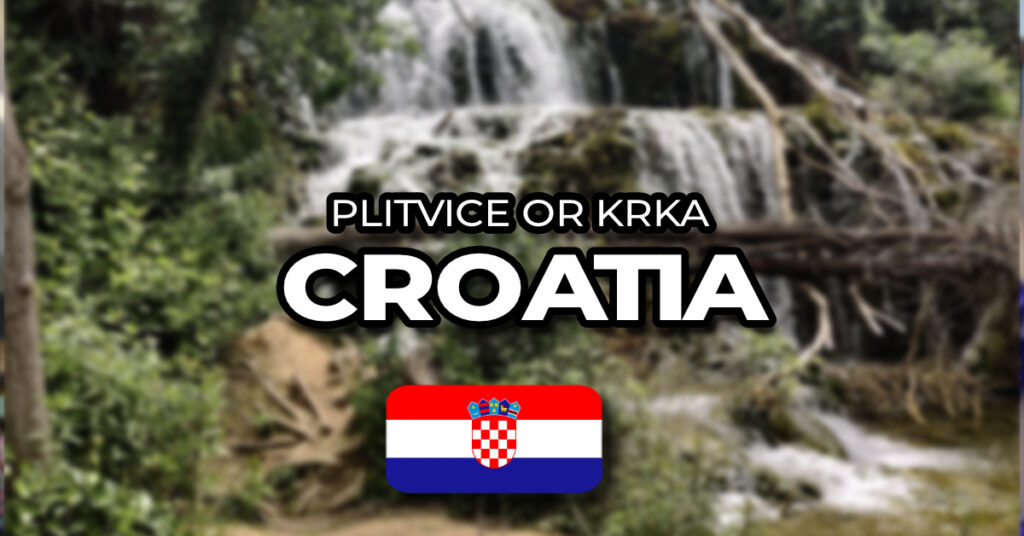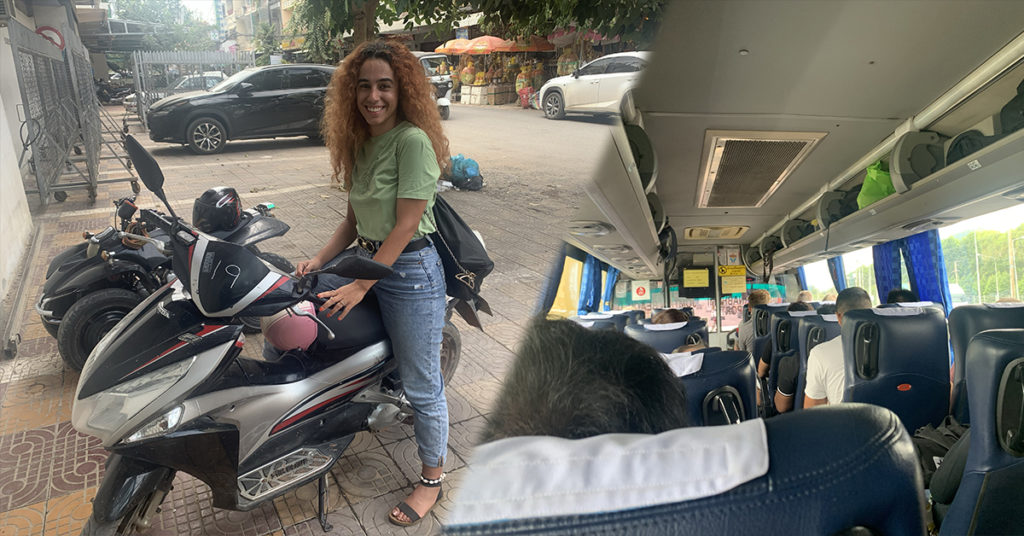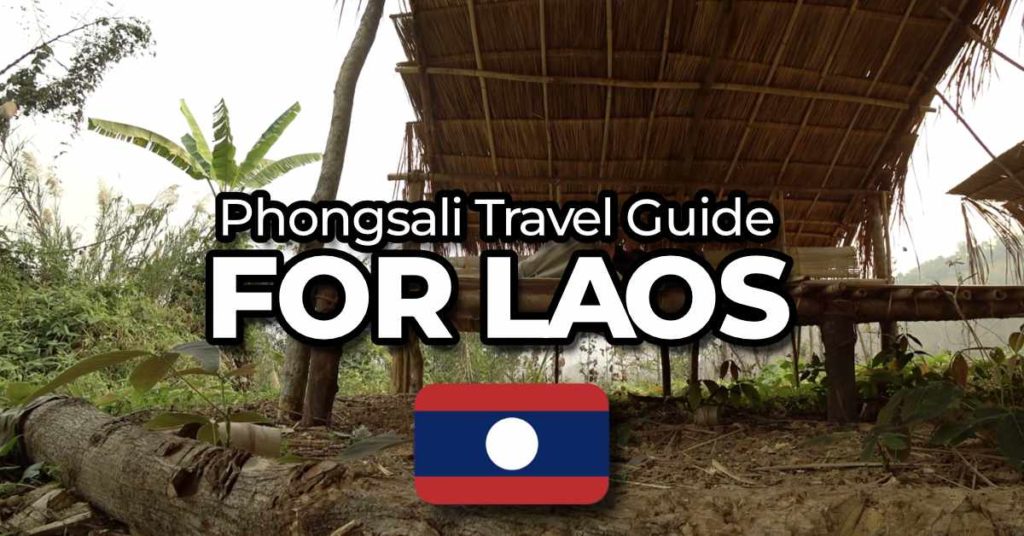Deciding between Plitvice Lakes and Krka National Park can be tough for nature lovers. They are both captivating natural wonders, and only two hours apart by highway. I have visited both parks several times and I highly recommend experiencing their unique charms. Plitvice Lakes is a stunning place with waterfalls, clear lakes, and lush greenery that amazes visitors. Krka National Park provides an immersive experience. It has waterfalls you can easily reach and lush vegetation. You can also swim here which is great and sets it apart from Plitvice.
In this article, I will talk about the differences between each option for tourists. I will also explain why I think one is better than the other. Additionally, I will share some lovely pictures of both places.
To put it briefly, if you can visit both, visit both! But, if you have to choose: Plitice has a more impressive nature while Krka has a more diverse experience.
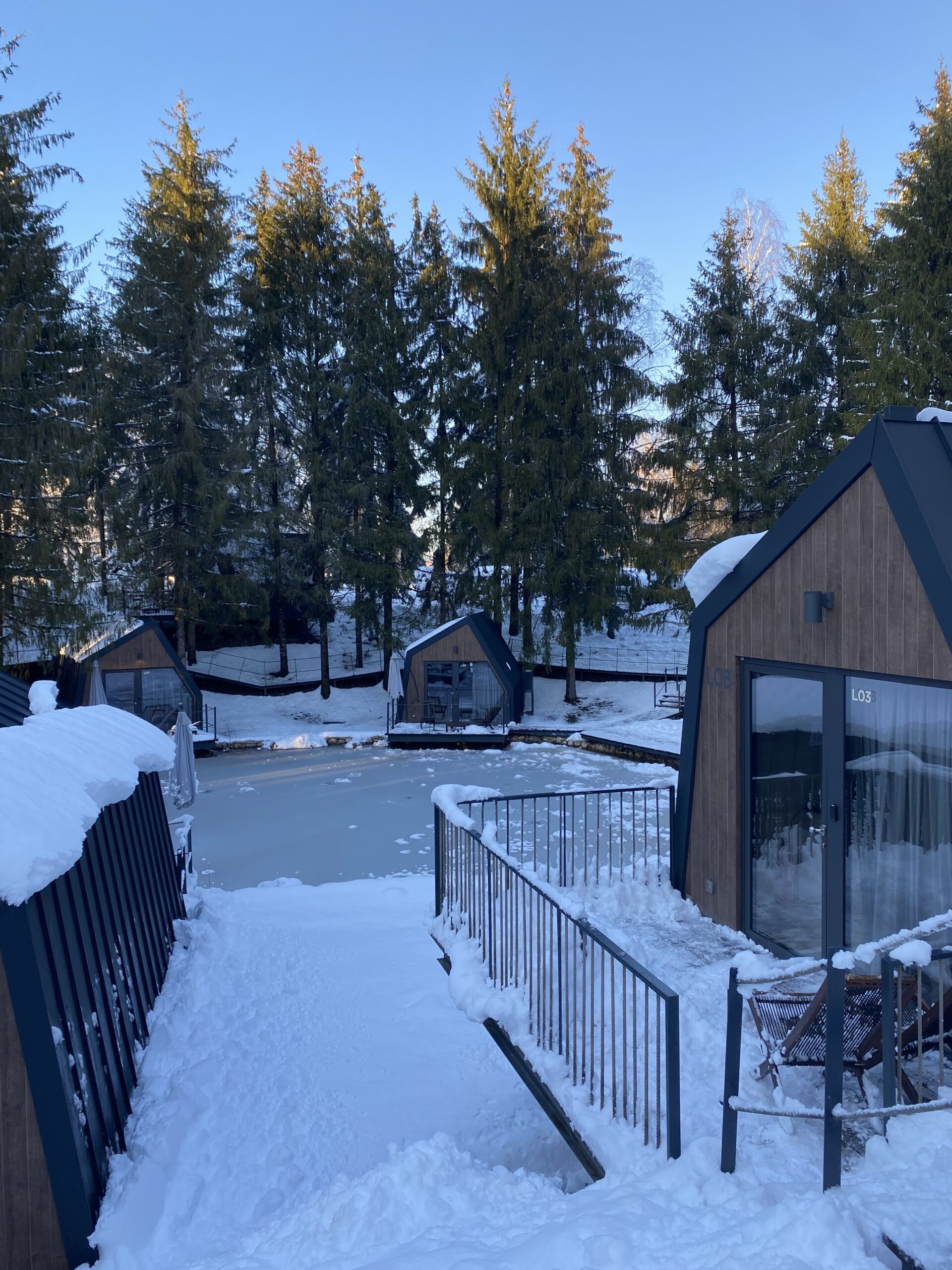


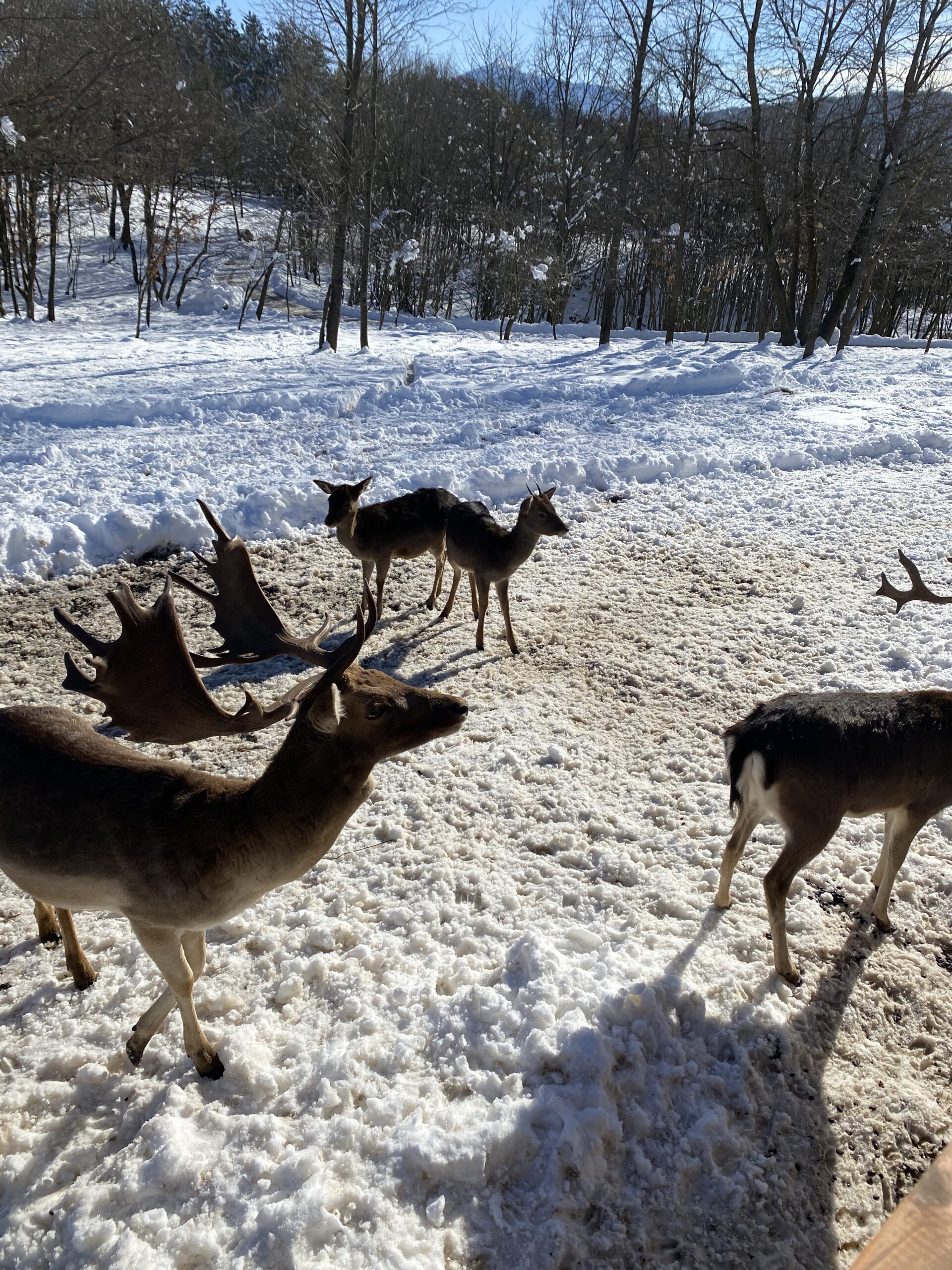
Krka
- Price:
- 40€ during summer, 15€ April and May, 20€ October, 7€ rest of the year per adult
- 7 waterfalls
- 2 main entrances
- Marshy nature combined with the Mediterranean
- Skradinski buk – must visit
- Roški slap – must visit
- Second oldest hydro plant in the world- must visit
- Excellent walking trails
- Great viewpoints
- Meadows
- Places where you can swim during summer
- Strong cultural heritage
- Restored watermills – must visit
- 2 monasteries, Visovac on an island and Krka monastery – must visit
- interesting flora and fauna
- cycling trails
- boat trips
- Historical sites- Roman amphitheater and Oziđana cave – must visit
- Family-owned restaurants on site
- best time to visit – summer or spring
Plitvice
- Price:
- 40€ during summer, 23.5€ April, May and October, 10€ rest of the year per adult
- (Boat rides included in the ticket)
- 2 main entrance
- Largest waterfall in Croatia – must visit
- 16 connected lakes –must visit
- Protected by UNESCO
- First Croatian national park
- Famous for its cascading lakes
- 119 speleological localities
- Great walking and hiking trails – must visit
- Forest nature
- diverse flora and fauna
- Lots of hotels around the park
- Different activities close to the park
- Good to visit all year round
Why Plitvice lakes?
Plitvice is a natural wonder that all nature lovers must visit. It has 16 lakes, which formed over thousands of years due to erosion. There is also a stunning Great waterfall.
Any nature enthusiast must visit Plitvice National Park. It is the oldest national park in Croatia and has 16 cascading lakes connected by caves and waterfalls in a beautiful karst landscape. Plitvice has 114 speleological objects, such as caves and pits, that make it a breathtaking place to explore. When you enter the park, you can choose from several routes that last two to seven hours.
Some routes include a boat ride. But Plitvice has more activities. There are deer farms, kayaking, and horseback riding. The area around the park is good for adventure. The accommodations near Plitvice are also great. There are hotels and restaurants in the forest.
I have a great memorable experience of Plitvice’s beauty I’d love to share:
I was coming back from a concert in Pula. My friend and I stopped at a hotel in Plitvice for a meal. There was a hailstorm suddenly. I was on the restaurant’s porch. I looked at the meadow. It was magical. It was June, but the weather was mild. During my last visit in January a few years ago, the park was covered in snow. It made the destination even more special.

Why Krka?
National Park Krka is an amazing experience in total, from beautiful nature, historical localities, and wildlife, there is something for everybody.
When you visit Krka National Park, you will have a unique experience. The park has amazing nature and trails. Unlike Plitvice, Krka has special attractions. One is the Visovac Monastery, which is on an island and you can reach it by boat. Another important spiritual site is the Krka Monastery, which is the center for Orthodox believers in Dalmatia. You can also explore the “Oziđana pećina” cave, which gives you a glimpse into Stone Age religious rituals.
To enter the park, you can buy a ticket at one of two entrances. Then, you can take a bus or walk downhill for 20 minutes to reach the river. As you walk along a one-hour trail, you will see frogs hopping around in the marshy nature. The trail leads you to the Roški Slap or Skradinski Buk basin.
There, you can enjoy nature, try local food, and admire the beautiful waterfall at a small camp. You can also visit a restored watermill to experience the past. For an even better adventure, you can take a boat trip to the monasteries we mentioned earlier. This will make your visit to Krka National Park unforgettable.

Krka nature
Nature in Plitivice vs Krka
Breathtaking natural beauty graces both Plitvice and Krka. Plitvice has mountains, while Krka has marshy landscapes and Mediterranean influences.
Plitvice and Krka are close to each other, but have unique features that make them special in Croatia. Both parks are beautiful and have impressive waterfalls and scenery that visitors love. Plitvice is surrounded by mountains and has cliffs, waterfalls, and beautiful lakes in dense forests. The park has many different plants, like mossy rocks and colorful plants. These plants create a balanced ecosystem for birds, butterflies, and small animals. In contrast, Krka offers a marshier environment, contributing to a different overall feel.
The park’s meadows are a great place to relax. This sets it apart from Plitvice, which focuses more on caves. Krka has a variety of frogs, adding to the charm of its nature. This gives visitors a unique experience. Nature lovers can explore both parks in Croatia to see the diverse landscapes that Croatia has to offer.
Ecosystems
Water


Plitvice is the biggest national park in Croatia. It has 16 lakes that are all connected and have cascading waterfalls. The lakes have really impressive water surfaces. On the other hand, Krka has seven waterfalls, including the famous Roški waterfall and Skradinski buk. Both Plitvice and Krka have clear water, big waterfalls, and large bodies of water. But Plitvice is even more impressive because its water surfaces are larger.
Plitvice Lakes National Park is Croatia’s biggest national park. It covers almost 30,000 hectares and is located in the central part of the country, in the lower parts of the Dinarides.
The park’s landscape is karst, which means it has a mix of forests and meadows. It is really beautiful and has a lake system called Plitvice. The lakes are connected by many waterfalls and watercourses, both above and below the ground.
The upper lakes are on dolomite and have gentle slopes and less steep shores. They are surrounded by dense forests. The lower lakes are smaller and shallower. They are in a limestone canyon with partially steep shores. These lakes have been shaped over many years by geological and biochemical processes. These processes have created natural dams called tufa barriers.
Tufa barriers are formed when calcium carbonate from the water deposits and hardens, which creates a unique and beautiful landscape.
On the other hand, Krka also has its own charm. It has seven waterfalls, including the famous Roški waterfall and Skradinski buk. Krka also has Vivac Lake, which has the iconic Visovac island with a historic monastery. Vivac Lake is the second-largest lake in Croatia. Both Plitvice and Krka have amazing water attractions that show the beauty of nature.
Plantlife


Plitvice and Krka have different types of plants because of where they are located. Plitvice has subalpine plants, while Krka has more plants that grow near rivers. The differences in where Krka and Plitvice are located make their plants interesting. Krka is closer to the sea, so it has plants that are influenced by the Mediterranean and by rivers. This creates a unique mix of plants, especially ones that like marshy areas. On the other hand, Plitvice is in the middle of the country and is the biggest national park in Croatia
Plitvice is on the slopes of Mala Kapela and Lička Plješevica, and its elevation ranges from 369 to 1279 meters above sea level. These conditions make it a great place for many different kinds of plants. In fact, Plitvice has about 1400 different types of plants, which is about 30% of all of Croatia’s plants. Plitvice has lots of beautiful plants, including tall trees, plants that grow like forests, rocks covered in moss, and ferns.
There are also plants that like wetlands and grow near the water. Even though only about 1.7% of the plants in Plitvice are unique to the park, there are three types of carnivorous plants that are special to Plitvice.
Krka has a different kind of environment that affects its plants. Krka is influenced by the sea and the Krka River, so it has plants that are common in the Mediterranean and plants that grow near rivers. There are about 1197 different types of plants in Krka, and about 3.47% of them are unique to the park. These unique plants are mostly ones that are found in the Illyrian-Adriatic area, which is a special part of the region. The different habitats in Krka make it a good place for many different types of mushrooms.
Animal life
While Plitvice showcases a diverse array of fish, reptiles, amphibians, and birds, Krka’s emphasis on aquatic life and its distinctive marshy ecosystem creates a truly distinctive and immersive experience for wildlife enthusiasts in both parks.
Plitvice has a wide variety of animals, including fish, reptiles, amphibians, and birds. Ongoing research has discovered 259 species in Plitvice, which is amazing. There are 321 species of butterflies and 89 species of bugs. Plitvice is also home to larger animals like brown bears, grey wolves, and Eurasian lynx. If you’re lucky, you might even see a playful Eurasian otter. Nearby, there’s a farm where you can interact with domesticated animals.
Krka has a different landscape with a river. It’s home to 31 species of fish and a marshy environment where 22 reptile species live. Sixteen of these reptiles are strictly protected. Amphibians like frogs and toads thrive in this unique environment, and they are important indicators of environmental changes. Bird watchers will be delighted to know that there are 229 bird species in Krka. It’s a popular place for migratory birds and also a sanctuary for birds that spend the winter there.


Landscape
Krka and Plitvice both have unique landscapes shaped by karst landscapes and water erosion. The dissolution of rocks like limestone has created caves and pits in both parks. Water erosion has continuously shaped the landscapes of these parks. Tufa, which forms from calcium carbonate deposition in water, has played a role in shaping the parks, creating barriers between lakes in Plitvice. In Krka, the Krka River shapes the terrain.
The topography of each park is influenced by its location. Plitvice, at a higher altitude, has a mountainous terrain. Krka, at a lower altitude, has a mix of Mediterranean and riverine influences, including some marshy areas. Plitvice Lakes National Park is known for its cascading lakes and waterfalls arranged in a ladder-like sequence. Krka has the Skradinski Buk waterfall and the Roški Slap waterfall, each with its own unique layout and scale.
Underground
If you love exploring caves, you must visit the caves in Krka and Plitvice. These parks have many beautiful caves, formed by the same processes of erosion and karst landscapes. The caves are made of limestone and dolomites and are home to unique animals that live in the dark underground. The caves also provide habitats for rare and protected species, and their interiors are decorated with formations that took thousands of years to form.
In Plitvice, there are about 100 explored caves. Three of them, Šupljara Cave, Black Cave (Lake Fairies’ Cave), and Golubnjača Cave, are declared natural monuments. Among these, only Šupljara Cave is open to visitors. The most famous cave near Park Plitvice is the “Barać Caves.” It has sections like Guano Hall and the Elephant Feet Hall, with impressive stalagmites, stalactites, and pillars reaching heights of up to ten meters. The “Barać Cave” is not inside the park but can be reached by car in just a 20-minute drive.
Krka has 67 caves within the park. One of them, “Oziđana Cave,” is open to visitors and has significant archaeological value. It preserves traces of Stone Age religious rituals, adding to its natural and cultural importance. Visiting these caves is like going on a journey through time, where you can witness the geological and cultural wonders shaped by thousands of years of natural processes

Trails
If you want an active vacation, the Krka and Plitvice trails are perfect. You can walk or hike according to your preference. Plitvice has longer hiking trails while Krka has cycling trails.
Plitvice trails
Walking in Plitvice is a captivating journey. You start high up in the mountains and make your way down to the peaceful lakeside. You walk on wooden boardwalks that go across the clear lakes. When you enter the park, you can choose from different trails. There are shorter ones that are 3500 meters long and longer ones that are 12500 meters long. Some trails have boat rides or bus transport.
Each entrance gives you a different experience. When I went, there was snow and the boat rides weren’t available. So, I explored the regular but enchanting “Trail A.” It was challenging because of the weather. Plitvice also has hiking and recreation trails. There are two recreational options: one is 221 km and the other is 9 km. If you’re going on longer trails, it’s a good idea to have a map and maybe a guide.
The most regular trail is “Trail A” and people always take it for a regular experience, it is very scenic since it includes the view of the Great Waterfall and through “Lower lakes”. For those that want to experience more nature and see all the lakes you can go on the H or C trail, they are very similar but the difference is on the entrance, they also include boat and bus rides. But if you want to go a long stroll along the coast side of the lakes you should go on K1 or K2 trail.
Krka trails
Krka has two main areas: Skradinski Buk and Roški Slap. Each area has a trail that takes you through forests and over wooden bridges. There are also other trails along the river, for example, there is a trail that goes from Stinice to Roški Slap and then to Oziđana cave which is 8.5 km long. Mostly all trails in Krka are educational with posts along the trail where you can some information about the park.
Though most used trails in Krka are the ones that go around the waterfalls, for explorers there are other trails to discover as well like the “Rogovo trail”, “Monastery trail”, “Roman Path trail” and many others.
In summary, whether you prefer the long trails of Plitvice or the shorter trails of Krka, both parks offer an active way to explore Croatia’s beautiful outdoors. Whether you like hiking, walking, or cycling, these parks provide an immersive experience.
Cycling
Cycling enthusiasts will love Krka. I has numerous trails that cater to cycling, including options for mountain biking and road biking. Compared to Plitvice, Krka is the better option for Cyclists because of this, as the mountainous landscape prevents long cycling trails.


Localities
Both Krka and Plitvice offer a blend of natural wonders and cultural heritage, providing visitors with a rich and diverse exploration of Croatia’s pristine landscapes and historical legacy.
Krka National Park
Skradinski Buk
This area features the iconic Skradinski Buk waterfall, a 1900-meter-long walking trail, and remnants of the Krka hydroelectric plant, the second oldest in the world. It’s a blend of natural beauty and cultural significance, with restored water mills and industrial architecture.
Roški Waterfall
Known as the “wide waterfall,” Roški stands at 22.5 meters and consists of small cascades called “Necklaces.” The trail passes over these cascades, offering a picturesque route. Visitors can explore a restored watermill and enjoy it in one of the three family-owned restaurants.
Krka Monastery
Positioned north of Roški slap, this spiritual center of the Orthodox faithful in Dalmatia holds historical and cultural significance. Boat trips from Roški slap or Skradinski Buk take visitors to this serene location.
Visovac
Located on a small island in the middle of Visovac Lake, Visovac boasts the Franciscan Monastery of Our Lady of Mercy and the Church of Our Lady of Visovac, dating back to 1445. Boat trips from Skradinski Buk or Roški slap offer a scenic journey to this historical and religious site.
Historical Sites
Krka offers a glimpse into history with ruins like the old Roman amphitheater in Burnum, medieval fortresses, and the Oziđana Cave containing traces from the Stone Age. If you’re into history, Krka provides a captivating journey through time.

Plitvice Lakes National Park
The Great Waterfall
Standing at an impressive 78 meters, the Great Waterfall is the highest waterfall in Croatia. Its grandeur is accentuated by the surrounding cascading lakes.
Šupljara Cave
A notable cave within Plitvice, Šupljara Cave adds to the park’s geological features and provides a unique underground experience.
Sixteen Lakes
Each of the sixteen interconnected lakes in Plitvice is a locality in itself, contributing to the park’s overall allure.
Krčingrad
Positioned between two lakes, Krčingrad is an archaeological locality within Plitvice, showcasing remnants from ancient times. For history enthusiasts, Plitvice unfolds its archaeological treasures.
Total Nature Experience
While specific sites like the Great Waterfall stand out, Plitvice’s strength lies in the overall experience of its nature trails, allowing visitors to immerse themselves in the park’s beauty. If you’re seeking a holistic encounter with nature and history, Plitvice is the perfect destination.

My personal experiences
In recent years, I visited Krka and Plitvice National Parks. I went to these parks when I was younger, but I don’t remember them well now. Let me share my recent experiences, starting with Plitvice.
Plitvice
I’ve explored Plitvice on two distinct occasions and passed by several times. Driving through Plitvice is like entering a fairy tale, with hotels and restaurants nestled in lush forests surrounded by towering trees. Accommodations around the park are plentiful, and parking was never an issue for me. During my last winter visit, I opted to stay in Grabovac at the “Plitvice Holiday Resort.” This cozy retreat, amidst snow-covered landscapes, exuded a unique charm reminiscent of a scene from a Disney movie, frozen and magical. The resort offers tree houses and cabins by a small lake, creating a perfect retreat. And let’s not forget the delightful stews that left a lasting impression on my taste buds. A visit to the nearby Deer Farm, just a 20-minute drive from the resort, added another layer of enchantment to the experience, although the boat rides were off-limits during that specific winter period.
Krka
My relationship with Krka goes way back—to playful days in the meadows with my friends and educational field trips exploring the hydro-power plant. A more recent visit, two years ago in spring with my family, showcased Krka’s timeless beauty. The trails, weaving through nature’s marvels, provided an unforgettable experience. If you’ve ever admired Shrek’s swamp, Krka offers a comparable charm—blending the best of a swamp with a gentle touch of the Mediterranean climate and proximity to the sea. The vistas along the trails are breathtaking, offering plenty of opportunities for picturesque moments. After our Krka adventure, we headed to Šibenik for lunch—a nearby city that, in itself, is worth exploring.
Both Plitvice and Krka have etched unforgettable memories, each offering a distinct charm shaped by nature’s wonders and cultural richness. Whether it’s the frozen enchantment of Plitvice or the scenic allure of Krka, both parks hold a special place in my heart.

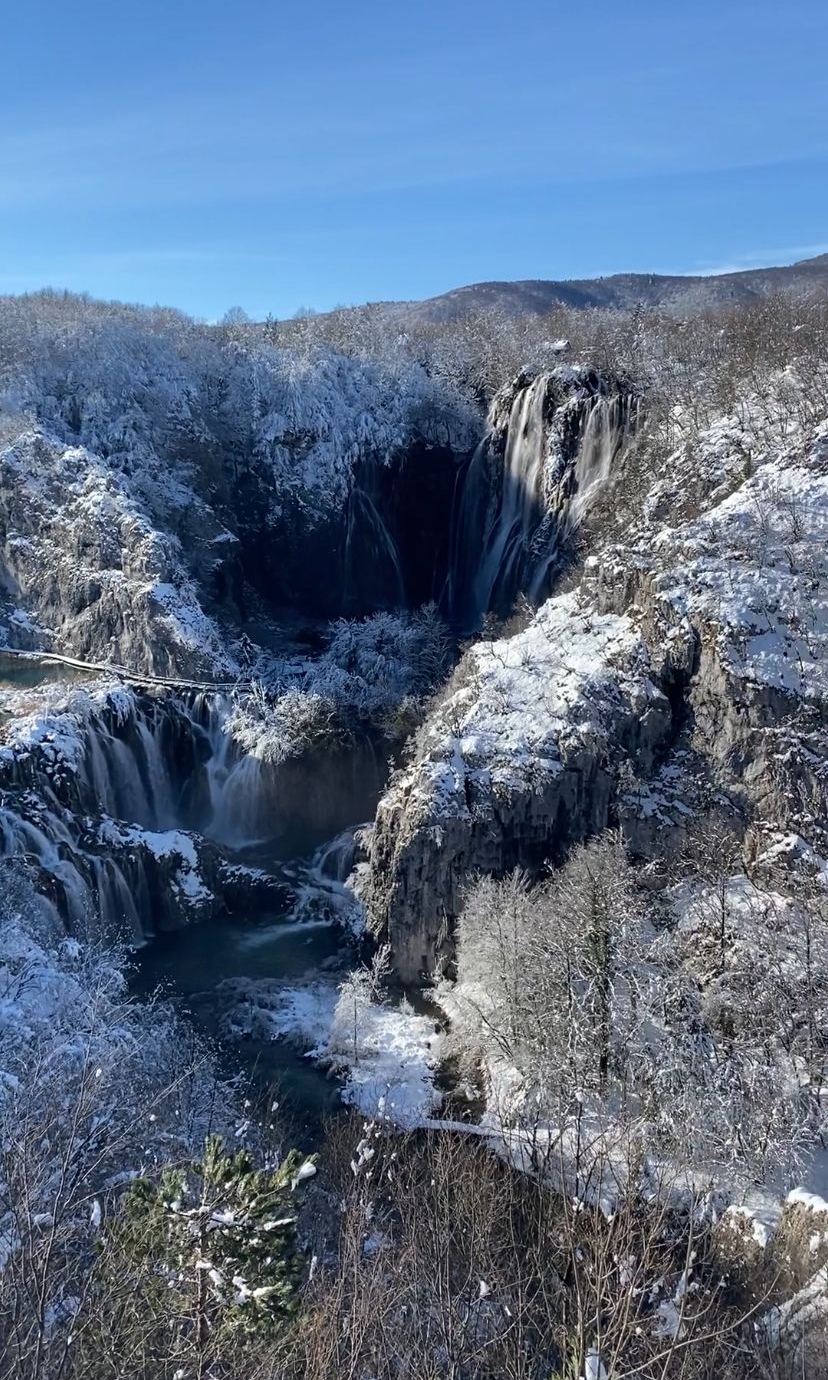
Itinerary For Plitvice & Krka
If you’re planning to explore both Plitvice and Krka in just 2 days, here’s a suggested itinerary. I recommend staying in Grabovac at the ‘Plitvice Holiday Resort’ or another Plitvice resort, or you can opt for accommodation near Krka in Šibenik or Skradin, as there are also resorts near Krka, similar to Plitvice. The order of the days can be flexible depending on your location.
Here’s a 2 day itinerary for Plitvice & Krka:
- Day 1: Explore Krka
- Begin your day early by visiting Krka National Park. Start with a trail at Skradinski Buk, one of the most picturesque spots in the park. Optionally, take a boat trip to Visovac, which is a four-hour round trip. After Krka, head to Šibenik for a relaxing evening and dinner.
- Day 2: Discover Plitvice
- Start the day early with a visit to Plitvice Lakes National Park. Consider purchasing tickets online to save time. After exploring Plitvice, if time allows, visit the Deer Valley Ranch or explore the fascinating Barać Caves. If you are unable to fit them in, these can be included in your itinerary for an additional day. Make sure to book any additional activities in advance. The duration of your stay in each park is flexible, ranging from a quick 2-hour visit to a more extensive 8-hour hiking experience. Tailor the itinerary based on your preferences and the time you have available. Enjoy your dual adventure in the natural wonders of Plitvice and Krka!
Q&A
Can you swim in Krka and Plitvice?
Swimming is strictly forbidden in Plitvice, but in Krka, you used to be able to swim anywhere. However, swimming at Skradinski Buk in Krka has been prohibited for the past few years. You can still swim at Roški waterfall, Stinicae, and Pisak at your own risk, but only from June 1st to September 30th.
At what time of the year should I visit the parks?
The parks are most crowded from June to the end of September, making April and May ideal for a visit. January is also an option for snow enthusiasts. It’s worth noting that visiting in these months can be more cost-effective, both in terms of accommodation and entrance tickets.
What are the seasons like, and how do they affect the parks?
Certain parts of the parks may be closed during winter, like the upper lakes in Plitvice. Additionally, the weather can impact activities, such as boat rides in Krka. The vegetation and overall experience also vary across seasons.
What is parking like?
Parking has not been an issue in the past, with ample parking spaces available near both entrances of each park.
How to get to the park?
Using Google Maps is a convenient way to navigate to the parks. Keep in mind that each park has two entrances, so set your navigation accordingly. If you’re in larger towns like Split, Šibenik, or Zadar, organized bus tours are available daily.
Any special activities to do there?
In Plitvice, activities include hiking on extended trails and boat rides included in the ticket. In Krka, you can take boat trips, explore walking trails, or go cycling.
Budgeting for trips?
The cost depends on when you visit. Winter visits are generally cheaper, with entrance tickets costing 10€ for Plitvice and 7€ for Krka. During April and May, prices rise to 23€ for Plitvice and 15€ for Krka. In summer, the daily ticket is 40€ per person. If you join a city tour, the ticket is often included.
How long should I spend in both?
The duration depends on your interests. If you want a quick visit, 3-4 hours in each park is sufficient. For a more comprehensive experience, consider getting a two-day ticket to explore every detail.
So, which one should you visit?
Well, I highly recommend experiencing both if your schedule allows. However, if you find yourself having to choose between them, consider your personal preferences. Both Krka and Plitvice are extraordinary destinations, so prioritize the one that aligns more with your interests.
If you’re drawn to the enchanting blend of swampy and Mediterranean landscapes, coupled with a rich historical and cultural heritage, then Krka is the ideal choice.
On the other hand, if you have a penchant for the serene beauty of forested environments and dream of witnessing the awe-inspiring Great Waterfall, then Plitvice is a must-visit.
Alternatively, you could opt for the more convenient choice based on your current location. For instance, if you’re staying in Split, Krka offers a closer and more accessible option.
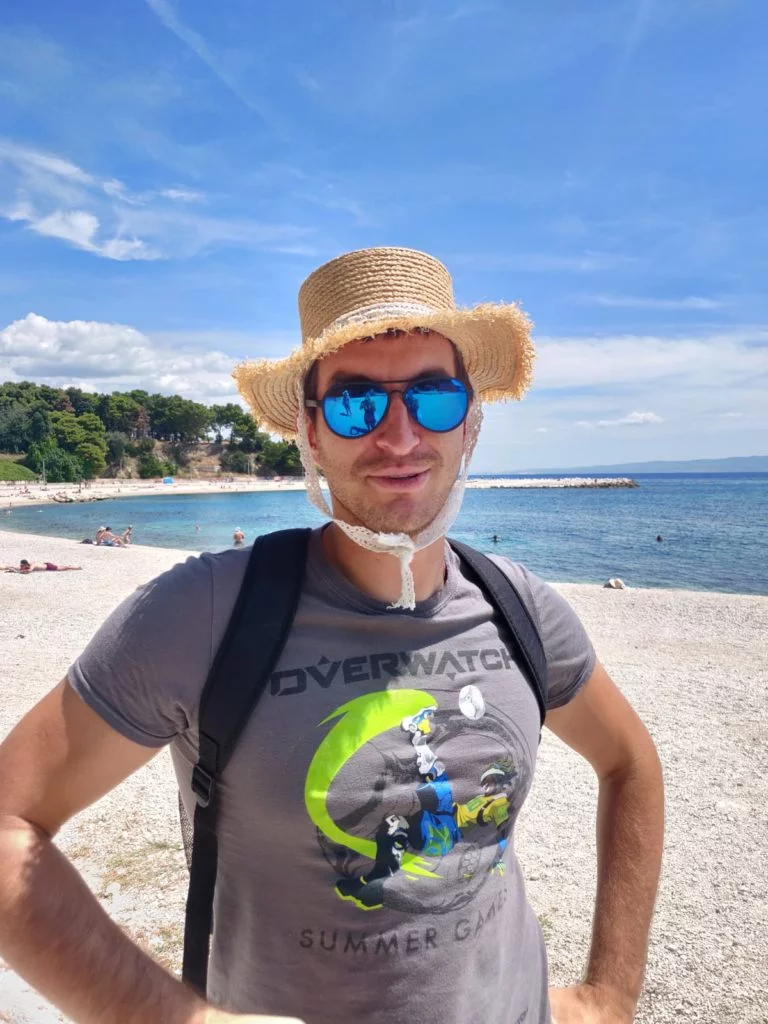
A travel enthusiast with 10 years of experience in the travel industry, Lenko has traveled to all corners of the world, including America, Mexico, Japan, Thailand, Cuba, and most of Europe. His hobbies include karate and game development and the destinations that he desires to visit are Australia, New Zealand, Iceland and to revisit the fantastic Japan.
